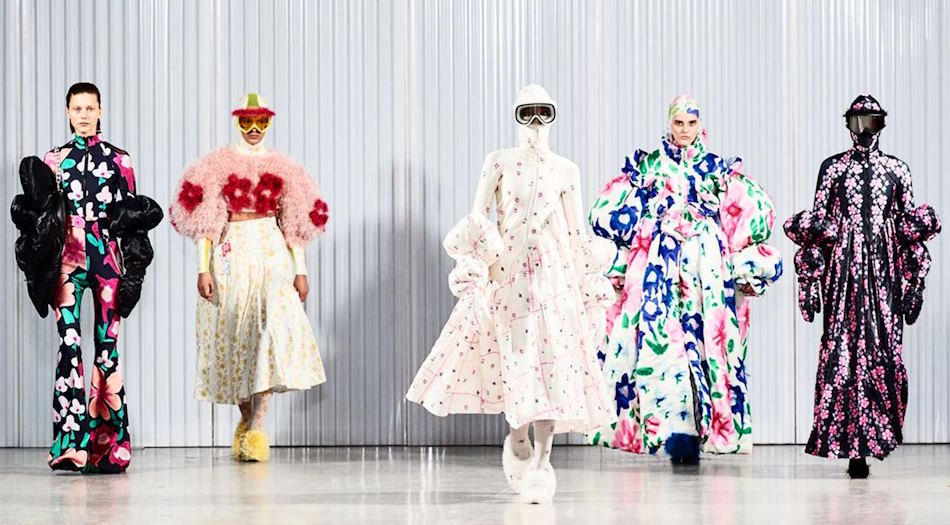The hallowed halls of fashion runways have transcended their physical confines, embarking on a digital metamorphosis that melds technology with creativity in unprecedented ways. Welcome to the era of Fashion Week’s digital revolution, where virtual runways and AI models have taken center stage. From the rise of virtual runways that transcend geographical limits to the integration of AI models that redefine the very notion of a fashion icon, join us as we unravel the captivating narrative of Fashion Week’s embrace of the digital age.
Virtual Runways: Redefining Fashion Presentations
Explanation of Virtual Runway Concept
Gone are the days when fashion aficionados would flock to grand venues for a glimpse of the latest runway collections. The advent of virtual runways has ushered in a new era of fashion presentations that defy geographic limitations and traditional norms. A virtual runway, in essence, is a digital platform that hosts fashion shows, allowing designers to showcase their creations to a global audience without the confines of a physical location. This innovative approach capitalizes on cutting-edge technologies to create immersive, interactive, and boundary-pushing fashion experiences.
Advantages of Virtual Runways over Physical Shows
- Accessibility to Global Audiences
One of the most compelling aspects of virtual runways is their democratizing effect on fashion. No longer restricted by geography or venue capacity, fashion enthusiasts from every corner of the globe can now access and engage with Fashion Week events. This democratization fosters inclusivity and diversity, as individuals who might never have had the opportunity to attend a live show can now be part of the fashion dialogue.

- Reduced Environmental Impact
The environmental toll of traditional Fashion Week events, characterized by energy-intensive lighting, transportation, and set construction, has prompted a growing concern for sustainability. Virtual runways offer an environmentally conscious alternative by significantly reducing carbon footprints associated with physical shows. The absence of travel requirements for attendees, models, and production teams translates to fewer emissions and a lighter ecological footprint.
- Creative Possibilities in Virtual Spaces
The virtual realm grants fashion designers a blank canvas for creativity. Freed from the constraints of physical spaces, designers can experiment with captivating and imaginative backdrops that complement their collections. This newfound freedom extends beyond the limitations of gravity, enabling the incorporation of surreal elements that might be unattainable on traditional runways. From ethereal landscapes to futuristic cityscapes, the digital backdrop becomes a playground for innovation and storytelling.
The Rise of AI Models in Fashion
Introduction to AI Models in the Fashion Industry
In an era defined by technological leaps, the intersection of artificial intelligence and fashion has given rise to a groundbreaking transformation. Enter AI models – virtual embodiments of creativity and innovation that are reshaping the very foundations of the fashion industry. These digital personas, meticulously crafted by algorithms and data, are challenging traditional notions of models and mannequins.
Collaboration between Fashion Designers and AI Developers
The emergence of AI models is not a standalone feat; it’s the result of collaborative efforts between fashion designers and AI developers. This synergy fuses artistic vision with technical prowess, as designers work hand in hand with AI engineers to create digital avatars that embody their creative expressions. This collaboration transcends the ordinary, blending the worlds of art and science to redefine the fashion landscape.

Benefits of AI Models for Fashion Brands
- Cost-Effectiveness in Creating Virtual Models
AI models offer an economical alternative to the traditional process of hiring models for photoshoots and runway shows. The resource-intensive task of coordinating schedules, managing contracts, and accommodating physical appearances is streamlined through AI. This efficiency translates into reduced costs for fashion brands, enabling them to reallocate resources to other crucial aspects of their creative endeavors.
- Ability to Experiment with Diverse Looks
AI models break the boundaries of physical appearances, allowing fashion designers to experiment with an array of looks and styles that may be difficult to achieve with human models. This flexibility encourages creativity and innovation, enabling designers to explore uncharted territories and redefine beauty standards.
- Addressing Concerns about Body Image and Diversity
AI models provide a unique platform to address long-standing concerns about body image and diversity in the fashion industry. Customizable digital avatars can reflect a broader range of body types, skin tones, and identities, fostering a more inclusive representation that resonates with diverse audiences.

